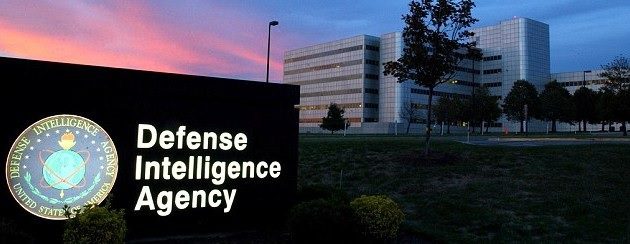Military Officials and Government Officials Are Adapting to High Tech World – Fast, Fast, Fast… But — Fast Enough?
The RFP for the Defense Intelligence Agency’s (DIA) Solution for Intelligence Analysis (SIA) III contract is expected to drop any day now. An RFI and an Industry Day are planned for this effort, though no dates have been set. What’s required here is national-level capability in intelligence analysis; general military intelligence; intelligence planning, management, and implementation; support to deployed forces; rapid response to crises; and intelligence analysis training.
All potential bidders are instructed to follow the directions provided on the National Security Agency (NSA) Acquisition Resource Center (ARC) website, www.nsaarc.net. Winning this contract will require adapting to DIA’s new approach to acquiring innovative and advanced technologies, as discussed below.
Recent events in the cybersphere clearly demonstrate the importance of what SIA III contractors will be called upon to do. The stakes are high – in more ways than one.
The SPECTRE of Hackmageddon
On Friday, May 12, hackers exploiting malicious software stolen from the US National Security Agency (NSA) hit dozens of countries worldwide with damaging cyberattacks. This incident forced Britain’s public health system to send patients away; it froze computers at Russia’s Interior Ministry and wreaked havoc on tens of thousands of computers elsewhere. The cyberattackers took over the computers, encrypted the information on them and then demanded payments totaling $300M, or more, from users to unlock the frozen devices.
Governments, companies, and security experts from China to Britain (including the US) raced to contain the fallout from the audacious global cyberattack amid fears that if they did not succeed, companies would lose their data unless they met ransom demands.
Cyber Nightmares
This is what keeps US military officials tossing and turning at night: when (not if) the next attack will come, if — somehow – US-developed software will turned against us (and others). Also: which components of the US military communications and control systems, if any, will be shown vulnerable, and how catastrophic the next incident will prove to be.
What does all this have to do with DIA’s upcoming SIA III contract? Plenty…. DIA is tasked, among other things, with getting – and getting out there when needed — all the info they can on those who would do America harm. That’s what SIA III is all about.

LT. GENERAL VINCENT STEWART – First USMC Director of DIA, and Commander, Joint Functional Component Command for Intelligence, Surveillance and Reconnaissance.
With regard to cyber, specifically, US Cyber Command has overall responsibilities for overseeing military-related cyber affairs. DIA has responsibilities to field operational networking capabilities to the Combatant Commands, COCOMs and other DoD warfighters, especially networks that operate at SCI levels (JWICS). DIA handles cybersecurity on those nets. Other DIA contributions to Cyber include strong support to HUMINT and Counterintelligence related to cyber, as part of their all-source intelligence analysis, is a core mission.
United States Cyber Command (USCYBERCOM)
This US armed forces sub-unified command is subordinate to United States Strategic Command. The command centralizes command of cyberspace operations, organizes existing cyber resources and synchronizes defense of U.S. military networks.
Cyber Command was created in 2009 at the National Security Agency (NSA) headquarters in Fort Meade, Maryland. It uses NSA networks and has been headed by the Director of the NSA since its inception. While originally created with a defensive mission in mind, it has increasingly been viewed as an offensive force.
In any case, this $5.7B F&O IDIQ is a continuation of SIA II, whose 12 component contracts are held now by the likes of BAE, BAH, CACI, CTC, Buffalo Group, Cyberspace Solutions, Engility, Lockheed Martin, MEP, SAIC, and Veritiss.
All-Source Analytics
To be administered by the DIA Directorate for Analysis, SIA III requires provision of all-source analytic staff augmentation to the Department of Defense Intelligence Community (consisting of the DIA, Service Centers (Army, Navy, Marine Corps, and Air Force) and the Combatant Commands). Its goal is to provide leaders of these aforementioned entities with the capability to efficiently manage the use of analytic services across the Defense Intelligence Analysis Program (DIAP). It is also intended to streamline the procurement process for contract intelligence analysis services. Repeat: intended to streamline the procurement process for contract intelligence analysis services.
Because procurement — the length and complexity of the procurement process — is a real issue. This is true for everyone in government and particularly DIA. After all, we’re deep in the age of rapid technological advancement. And DIA is now at the forefront of efforts to streamline procurement.
It’s a must-do.
DIA has to keep one step ahead of the bad guys out there. And they’re out there, using advanced, commercially-available systems to manufacture IEDs, and train kids in Africa in how to field strip and reassemble AKs. Or they’re sitting in caves, or basements, internet cafes or coffee shops or wherever making mischief and havoc at computer-linked keyboards or with i-pads and other hand-helds. They can terrorize by remote control ensconced in spacious penthouse apartments, luxurious palazzos, or wind swept and far off deserts and mountain ranges, killing innocent civilians in night clubs, concert halls, in high traffic urban areas, or impregnate commercial, governmental and military IT and commo systems with malware, with just a few simple keystrokes.
Cutting to the Chase and Cutting the Red Tape
Last month at DIA HQ, DIA officials and others from the intel community held a “Shark Tank” session during which silicon valley types presented advanced ideas about advancing intel capabilities. DIA needs to integrate soft and hardware advancements into their systems, pronto. It’s at the forefront of new procurement entities that have been established to ensure that good ideas/technologies/software advancements don’t get tangled in red tape and/or get lost in the cubical jungles of the bureaucracy and/or fall through its many cracks.
At the behest of Lt. General Vincent Stewart, DIA’s commander, Albert Bolden, DIA’s Chief Innovation Officer has stood up iHUB. Here’s how it works: DIA acquisition officials go out and talk to analysts working different types of mission elements, for ideas about what technical wizardry would help them do their job better.
Top of Form
DIA’s innovation office turns these ideas into more formal requests posted to the agency’s www.NeedipeDIA.com platform open to cleared vendors, academics, and the like.
Companies can respond with two-page white papers outlining how they would tackle the problem. If the analyst who put out the request likes the paper, the inventor comes in to demo in the iHUB room face-to-face.
During DIA industry iHUB outreach events, firms debut products to do technology forecasting, instant translation, and big data analysis on everything from countries to individuals.
Analysts can choose the ones that they like, and DIA can fund a limited pilot on the spot. The analyst and contractor then work together to craft a bespoke solution to the analyst’s problem the same way that big companies hire developers to craft apps to fill their needs.
The New Way
This is DIA’s new procurement way. And bidders on SIA III better show some new thinking to what they’re offering as part of this effort now. The same old same old won’t cut it. Not with DIA under the command of Lt. General Stewart USMC.






Leave A Comment